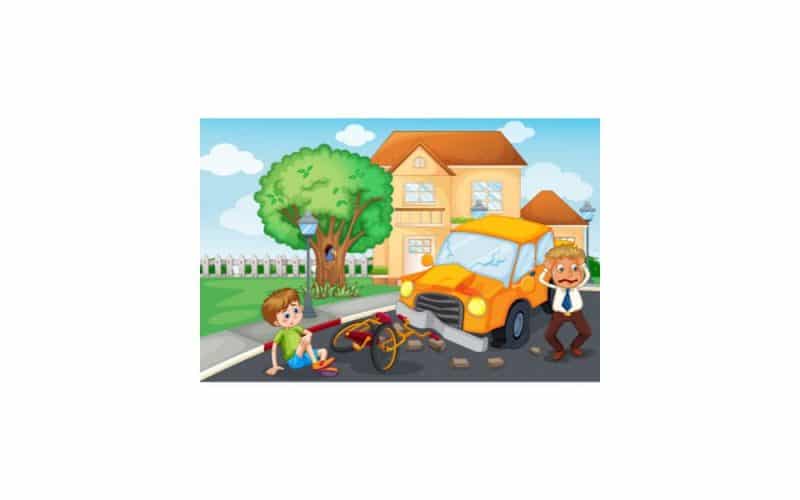A key reason to have life insurance is to provide a safety net for those who depend on you financially. That’s why people often buy a policy after having a child. What you might not realize, though, is that you can also add that child to your own life insurance policy as a child rider.
A child rider is an add-on to a life insurance policy that pays out a death benefit if one (or more than one) of your children passes away. This added coverage serves as a safety net for you so you can focus on your family instead of worrying about paying funeral expenses.
Adding a child term rider onto your life insurance policy is a cost-efficient way to insure the life of your children without having to buy a separate life insurance policy. What’s also practical about these riders is that they are convertible, which means they can be transformed into a permanent life insurance policy for your child.
It might seem silly to get life insurance on a child when no one is depending on them for financial support. But there are other reasons to consider adding a child to your own policy.
What is a child rider life insurance?
Many insurance companies allow parents to add what is called a life insurance rider to their insurance policy to provide additional coverage for their children. You can get a rider for a child, stepchild, or adopted child who is at least 14 or 15 days old, and up to age 18 or 19 years old.
There is little to no underwriting for a children’s term rider, so the child won’t have to take a life insurance medical exam to be covered. However, insurers might ask a few health questions to identify high-risk children, says Josh Hargrove, a Certified Financial Planner with Insight Wealth Partners. Those with certain pre-existing conditions might not qualify for coverage.
The rider will pay a death benefit to the parent if the child were to die before a certain age. Typically, these riders provide coverage until a child is age 22 or 25 or until marriage, whichever comes first.
You don’t have to get the rider when you buy a life insurance policy if you don’t already have children—you can add it later, says Kathy Pemberton, product director at Nationwide Mutual Insurance Co.
Also, one rider will cover all of your children. You don’t even have to notify the insurance company of each child you have, she says. You’ll just have to demonstrate the child was within the age of coverage if you have to file a claim.
How much does a child rider cost?
You can add a $10,000 child rider to your term policy for as little as $4.20 per month, whereas a child life insurance policy would cost at least $45 per month or more.
- The cost of the rider is added to your yearly or monthly premium.
- Using the above example, a child rider with $10,000 of coverage would cost about $50 a year in premiums.
This coverage is separate from your base policy. In this scenario, if you have $500,000 coverage for yourself, the $10,000 for your child would be additional.
A child term rider will generally add an additional $5 to $7 per $1,000 of coverage per year to your policy premium.
For instance, if your rate is $5 per $1,000 of coverage and you buy a $15,000 child term rider, you can expect to pay about $75 a year, or $6.25 a month. Similarly, a $25,000 policy at $7 per $1,000 of coverage would cost $175 a year or about $14.58 a month.
How do you add a child rider to your term life policy?
Most insurers allow adults aged 18 to 65 to add child riders to their term life insurance policies, though some companies require you to be older than 20 or younger than 55 at the time of application.
- You usually add a child rider when you’re buying your policy. You can indicate on your application whether you want to add any riders or special features.
- Some insurance companies don’t offer child riders in certain states due to insurance regulations.
- The agent you’re working with will be able to help walk you through options. At Policygenius, our experts are licensed in 50 states and can help you compare and choose from policies tailored to your needs.
In some cases, insurance companies let you add a child rider after your policy is active, but not all insurers have the same guidelines.
Companies also have different restrictions around:
- Maximum death benefit for child riders
- The maximum age of the children covered
- Medical information required for the rider
- When the child rider expires
- Whether the rider is convertible into child life insurance
Your children don’t have to take a medical exam for you to add a child rider, but you may have to take one for the policy to become active. However, some insurance companies do ask medical questions about your children. If your child has a pre-existing condition, your rider may not cover them.
Benefits of adding a child term rider
There are several reasons why adding a children’s term rider to your life insurance policy can make sense.
- The cost is low. A parent with a Nationwide term life or whole life insurance policy could get a children’s term rider with a $25,000 death benefit for $10.94 a month. The cost is a few cents lower for those with a universal life insurance policy—$10.75 a month.
- It eliminates the burden of paying for final costs. Although the chances of a child dying are very low, a children’s term rider can help you be prepared financially for a worst-case scenario.
- It can guarantee a child’s insurability. Children’s term riders usually can be converted to a permanent life insurance policy when the term is up, without medical underwriting. This can be a valuable feature for children who develop medical issues that would make it difficult to get their own life insurance coverage as an adult. With that term life conversion, they are locked in for coverage at that point.
Drawbacks to children’s term life insurance riders
The low cost of a children’s term rider makes it an affordable way to be prepared for the unimaginable. However, these riders have several limitations and drawbacks that you should consider before adding one to your life insurance policy.
Limited coverage
The coverage amount for a children’s term rider usually is limited to $25,000 or less per child. That could be enough to cover final expenses—considering that the median cost of a funeral and burial is $7,640, according to the National Funeral Directors Association.
However, it might not be sufficient to cover any outstanding medical bills or replace income for parents who want to take time off to grieve the loss of a child.
Limited conversion amounts
If your children want to convert the term rider to their own policies, they likely won’t be able to get much coverage. For example, a Nationwide children’s term rider can be converted to a whole life policy in an amount equal to the face amount of the rider. So the maximum benefit would be $25,000.
A State Farm rider, on the other hand, can be converted to an individual policy with a benefit of up to five times the rider amount (for a maximum of $100,000 in coverage).
Coverage can terminate prematurely
Although children’s term riders usually provide coverage for a child up to age 25, the parent’s age also can affect the length of coverage. Some insurers will terminate a rider once the parent who is the policyholder reaches age 65 or, in some cases, age 55.
Parents who have children later in life could lose coverage for their children before they reach age 25. A rider also will terminate if the underlying policy terminates.
Conversion to a permanent policy can be expensive
Because insurers don’t require underwriting to convert a term rider to a permanent policy, they often issue the new policy at the standard risk class. Healthy people would be better off applying for coverage on their own and going through the underwriting process. They likely would qualify for the preferred or super preferred risk class and get a lower rate.
A final drawback to these riders is that the insurance company won’t know when your child reaches the maximum age for coverage. Unless you notify the insurer to cancel the rider, you could continue being charged for it long after your child turns age 22 or 25.
Considering these cons, along with the pros of children’s term riders, should help you decide whether it’s worth it to add one to your life insurance policy.
Does a child rider cover multiple children?
In most cases, one child rider covers all current and future children in your household, including birth children, adopted children, and stepchildren.
Grandchildren aren’t covered under a child rider in most cases, although they may be covered if the grandparent has legal guardianship and is younger than age 55 or 60, depending on the insurer.
You can usually buy coverage for children between 15 days and 18 years old. Riders last until your child reaches age 25 or you reach age 65 or age 75, depending on the insurer that issued your policy.
What happens when a child term rider expires?
When a child term rider expires, coverage ends. But child riders are usually convertible, meaning you or your child can choose to replace the term coverage with a permanent life insurance policy.
Conversion amounts can be limited and expensive to convert. You may be better off shopping for a new life insurance policy. It’s a good idea to compare life insurance quotes among multiple insurers to find the coverage amount you need for a reasonable price.
Who can buy a child rider?
Child term riders are typically designed for parents to add coverage for their children to their life insurance policy. Depending on the specific terms and conditions of the policy, some insurance companies may allow the following people to add child term riders:
- Grandparents
- Aunts
- Uncles
- Other legal guardians
In such cases, the adult family member or guardian would need to be the primary policyholder of the life insurance policy, and they would be responsible for paying the premiums associated with the child term rider.
Child riders by life insurance company
Here’s how many insurance companies handle child riders on term life insurance policies.
| Company | Eligible ages | Coverage amount | Annual cost per $1,000 | Asks medical questions? | Add to active policy? |
|---|---|---|---|---|---|
| Corebridge Financial | 15 days to 18 years | $500 to $25,000 | $5.00 | Yes | Yes |
| Banner Life | 15 days to 18 years | $5,000 or $10,000 | $5.50 | No | No |
| Lincoln Financial | 15 days to 18 years | $1,000 to $15,000 | $5.00 | Yes | Yes |
| Mutual of Omaha | 15 days to 20 years | $1,000 to $10,000 | $7.20 | No | No |
| Pacific Life | 15 days to 18 years | $1,000 to $10,000 | $5.50 | Yes | Yes |
| Protective | 15 days to 18 years | $1,000 to $25,000 | $6.00 | Yes | Yes |
| Prudential | 15 days to 18 years | $10,000 to $100,000 | $5.15 | Yes | No |
| Symetra | 15 days to 17 years | $1,000 to $10,000 | $4.20 | No | No |
| Transamerica | 15 days to 18 years | $1,000 to $99,000 | $6.00 | Yes | Yes |
How a rider differs from a life insurance policy for a child
To be clear, when you add a children’s term rider to your life insurance policy, you’re getting temporary coverage for the child. This isn’t just the case if you have a term life insurance policy that will only be in force for, say, 20 years. Even if you have a permanent life insurance policy, the child rider will remain in effect only until the child reaches the age limit for coverage, which is typically age 25.
If you want coverage that lasts a lifetime for the child, you can buy life insurance for children. Ownership of the policy can be transferred from you to your child at any point. However, it’s common to wait until a child is an adult, at which point he or she can make the premium payments.
Life insurance policies for children usually are whole-life policies, so they will have a feature that allows them to build cash value that can be accessed for any reason. A children’s term life insurance rider, on the other hand, does not have any cash value—only a death benefit that will be paid if the child dies.
However, a rider can be one-fourth the cost of getting an individual policy for a child.
Recommended Articles
- $500k Life Insurance: How Much Will It Cost?
- 30-Year Term Life Insurance: Coverage & Cost
- BUSINESS LIFE INSURANCE: Cost, Types & How It Work
- BASIC LIFE INSURANCE: What Is It & How Does It Work?
- WHOLE LIFE INSURANCE: What Is It & How Does It Work
- ETHOS LIFE INSURANCE: 2023 REVIEW






